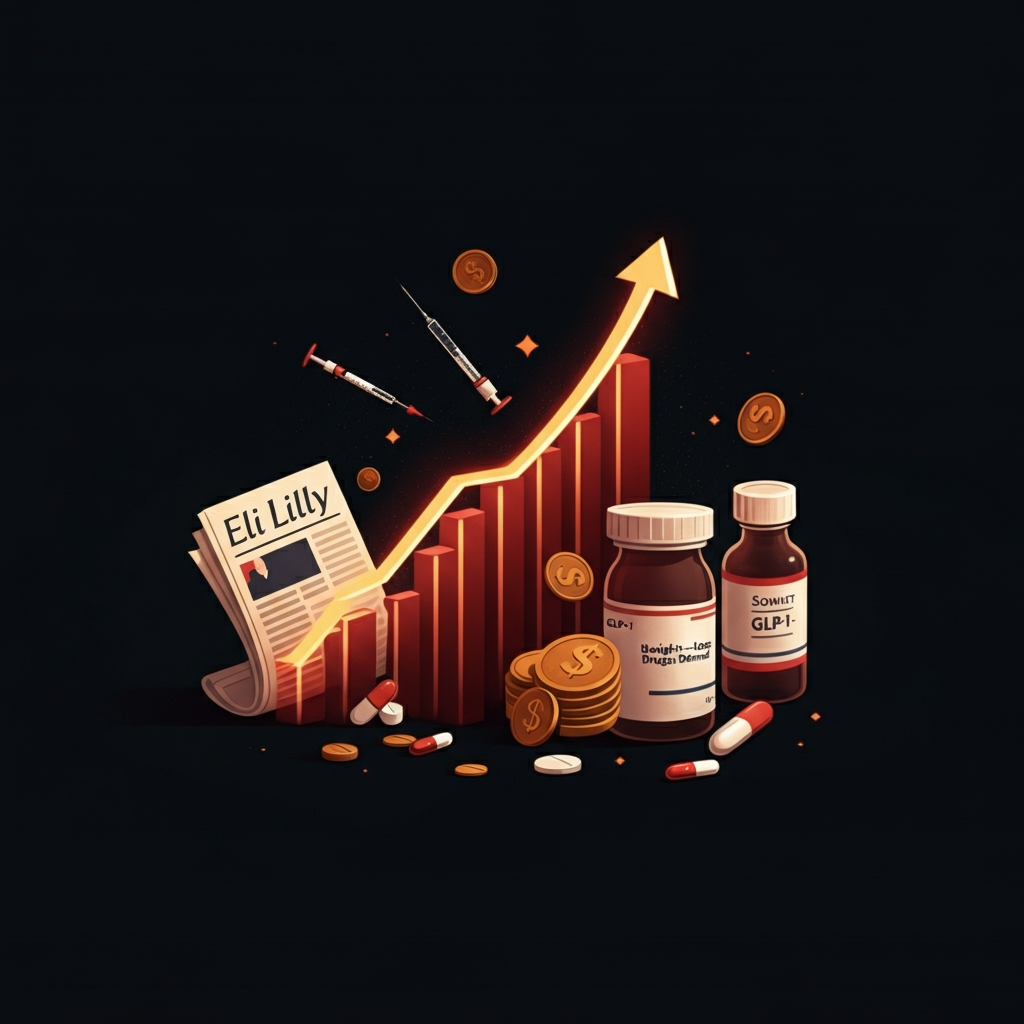When a major pharma company like Eli Lilly steps up its forecast, it’s worth paying attention. That’s exactly what happened recently, with the company saying its full-year outlook is higher—thanks largely to surging demand for its weight-loss drugs. Let’s break down what’s going on, what it means, and why the market is watching.
Strong Third-Quarter Performance
Eli Lilly reported third-quarter revenue of about $17.6 billion, well above estimates. At the same time, adjusted earnings per share came in at $7.02, far ahead of the ~$5.69 many analysts expected. So far so good.
What really caught investors’ eyes was the volume and revenue growth tied to its weight-loss and diabetes-adjacent treatments. The company’s portfolio — especially its incretin-based drugs — is clearly firing on all cylinders.
Forecast Raised: What’s Changed
With the quarter beating expectations, Eli Lilly raised its full-year adjusted earnings per share guidance to somewhere in the $23.00 to $23.70 range. That’s an upgrade from its previous outlook. It also expects annual revenue in the range of $63.0 billion to $63.5 billion. In short: the demand isn’t just good, it’s growing faster than the company expected.
The Weight-Loss Drug Effect
The phrase “weight-loss drugs demand drives” really nails the key insight. Here’s why:
- Eli Lilly’s weight-loss drug portfolio is seeing strong uptake, both among patients and prescribers.
- One program in particular, their recently-launched product, is outperforming expectations and helping push growth.
- Analysts see the global market for these treatments ballooning in the years ahead—which means the current momentum could continue.
In essence, this isn’t just a one-off quarter; Eli Lilly appears to be stepping into a stronger position in the rapidly expanding weight-loss and metabolic treatment market.
Why It Matters
Why should we care about this? Here are a few angles:
- Investor perspective: A company raising its outlook is a positive signal. Shareholders take note.
- Healthcare market impact: The stronger demand for weight-loss drugs might shift how healthcare systems allocate resources, reimbursements, and manage obesity-related treatment.
- Competitive dynamics: Other pharma players will have to respond; market-share battles could intensify.
- Regulatory and pricing risks: With growth this big comes scrutiny—especially around drug pricing, access, and government regulation.
Challenges and Watch-Points
Even with the upbeat news, there are some caution flags:
- Supply constraints: Rapid ramp-up in demand can strain manufacturing and supply chains.
- Pricing pressure: With weight-loss drugs gaining prominence, payers and regulators may push back on pricing—particularly in the U.S.
- Sustainability: High growth is great, but sustaining it over multiple years is harder. Market saturation, competition, and regulation could slow things.
- Execution risk: Moving from strong quarter to long-term growth demands execution—R&D, manufacturing, commercialization all matter.
What’s Next?
Here are the key things to follow going forward:
- Product pipeline updates: Are there new treatments in the pipeline that build on this momentum?
- Global rollout: How will Eli Lilly expand these drugs into new markets, especially outside the U.S.?
- Regulatory developments: Any policy changes around drug pricing, obesity treatment reimbursement, or manufacturing incentives.
- Competitive responses: How will rivals respond—both in launching their own products and in pricing strategy?
Final Thoughts
When a company like Eli Lilly raises its full-year forecast and points to weight-loss drugs demand as the engine, it’s a meaningful signal. This isn’t just surface growth — it reflects a broader trend of increasing importance of metabolic and obesity-related therapies. That said, high expectations also bring high risk. Execution, pricing, supply will all matter.
For investors, healthcare watchers, and industry observers alike, this story is worth watching. The question becomes: can Eli Lilly keep this momentum going, and can the broader market for weight-loss drugs live up to the hype?
FAQs
Q1: What triggered Eli Lilly’s forecast raise?
A1: The raise was triggered by a strong third-quarter performance, driven by higher-than-expected revenue from its weight-loss/diabetes drug portfolio and solid adjusted earnings per share.
Q2: Which drugs are behind the demand?
A2: The company’s incretin-based treatments—particularly those approved for weight-loss and metabolic disorders—are key contributors to the recent growth.
Q3: Is the weight-loss market really as big as it sounds?
A3: Yes. Analysts project substantial growth in the weight-loss drug market over the next several years, and Eli Lilly is positioned to capture a meaningful slice.
Q4: Could pricing regulation hurt the outlook?
A4: Yes. As drug prices rise and demand increases, pricing pressure from payers and governments becomes a real risk. That could impact margins and growth.
Q5: What are the biggest risks for Eli Lilly now?
A5: Supply constraints, manufacturing scale-up issues, increased competition, regulatory backlash and pricing pressure. These factors could inhibit growth if not managed well.
Q6: Should investors view this as a long-term trend or just a one-time beat?
A6: While the current beat is strong, investors should treat it as the start of a trend rather than a one-time event—but with the caveat that execution and market conditions must align for sustained performance.


